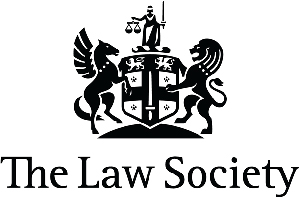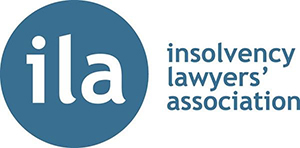Navigating the complexities of the rental market in England and Wales can be challenging, especially when it comes to issues of eviction. A “no-fault eviction,” carried out under a Section 21 notice, allows landlords to evict tenants without providing a reason, often leaving tenants in precarious situations. This comprehensive guide aims to clarify what no-fault evictions entail, the legal obligations of landlords, the rights of tenants, and what recent reforms mean for the future. Whether you’re a tenant concerned about your rights or a landlord seeking to understand your responsibilities, this guide will equip you with everything you need to know.
If you need tailored advice on any aspect of no-fault evictions, our expert property solicitors at Go Legal are ready to assist. Call us at 0207 459 4037 or book a consultation online.
What Is a No-Fault Eviction Under Section 21?
A no-fault eviction refers to the process by which landlords can regain possession of their rental property without providing a reason for doing so. This is carried out through a Section 21 notice under the Housing Act 1988. Unlike fault-based evictions, which rely on specific tenant breaches (e.g., unpaid rent or property damage), no-fault evictions allow landlords to end tenancies after a fixed-term agreement or during a periodic tenancy, provided certain legal requirements are met.
To better understand how Section 21 notices operate and their impact, consider the following examples that highlight both typical and more challenging applications of no-fault evictions:
- Example: John, a landlord in Manchester, rented his flat to Alice under a one-year assured shorthold tenancy. As the term ended, John decided to sell the property and issued Alice a Section 21 notice, giving her two months’ notice to vacate. Since this was a no-fault eviction, John wasn’t required to provide a reason. He ensured compliance by protecting Alice’s deposit in a government scheme, providing necessary documents like the Energy Performance Certificate, and adhering to the notice period. Unless Alice challenged the notice for procedural errors, she would have to move out as specified.
- Example: Sarah, a single mother who had rented a flat in Birmingham for three years with her young son, James, was shocked when she received a Section 21 notice from her landlord, Mr. Green, shortly after she requested urgent repairs for a persistent leak causing mould in their home. Despite always paying her rent on time and maintaining the flat, Sarah was given just two months to leave, with no explanation required. The notice left her scrambling to find new accommodation while juggling work and caring for her child. The no-fault eviction highlighted how landlords can legally evict tenants without justification, leaving responsible tenants like Sarah in a precarious and unjust position, despite following all their obligations.
Key Features of a Section 21 Notice:
A Section 21 notice, governed by the Housing Act 1988, is a key mechanism used by landlords to regain possession of their rental property without the need to specify a reason. However, strict compliance with procedural requirements is crucial to ensure its validity. Below are five essential features of a Section 21 notice that landlords and tenants should be aware of:
No Requirement to Specify a Reason for Eviction
Unlike a Section 8 notice, which is used for fault-based evictions (e.g., rent arrears or property damage), a Section 21 notice enables landlords to end an assured shorthold tenancy (AST) without providing any justification. This aspect can create a perceived imbalance of power, as it allows for repossession purely at the landlord’s discretion, provided all legal conditions are met.
Minimum Notice Period of Two Months
Landlords must provide tenants with a minimum of two months’ notice before the date on which they seek possession of the property. The notice must be served in writing. Recent legislative changes, including the Deregulation Act 2015, have introduced additional requirements, such as the need for a prescribed form (Form 6A) when issuing a Section 21 notice for tenancies starting after October 2015. The timing and length of notice may be further affected by temporary legislative changes or amendments in response to national crises, such as the COVID-19 pandemic.
Applies Exclusively to Assured Shorthold Tenancies (ASTs)
Section 21 notices are specifically applicable to ASTs, which are the most common form of residential tenancy in England and Wales. The notice can be used at the end of a fixed-term tenancy or during a periodic tenancy (one that automatically renews on a rolling basis). This flexibility gives landlords a way to recover possession after the expiration of a contract term, provided they follow proper procedures.
Compliance with Prescribed Legal Requirements
To serve a valid Section 21 notice, landlords must comply with various legal requirements, including:
Tenancy Deposit Protection (TDP)
Landlords are legally required to protect a tenant’s deposit in one of three government-approved schemes—the Deposit Protection Service (DPS), MyDeposits, or the Tenancy Deposit Scheme (TDS)—within 30 days of receiving it. In addition, they must provide the tenant with “prescribed information” about where and how the deposit is protected. Failure to comply with these rules, as outlined under the Housing Act 2004, renders a Section 21 notice invalid, meaning the landlord cannot use this notice to evict the tenant until compliance is achieved.
Provision of Required Documentation
Before issuing a Section 21 notice, landlords must have provided the tenant with key documents to ensure transparency and safety in the tenancy. These include:
- Energy Performance Certificate (EPC): This document rates the energy efficiency of the property and must be given at the start of the tenancy to help tenants understand potential energy costs.
- Gas Safety Certificate: For properties with gas appliances, landlords must arrange an annual safety check by a Gas Safe registered engineer and provide the tenant with a valid certificate confirming the appliances’ safety.
- ‘How to Rent’ Guide: This is a government-issued guide that outlines tenants’ rights, responsibilities, and what to expect from landlords. Landlords must provide the latest version of this guide to tenants at the beginning of the tenancy.
Prohibition Against Retaliatory Evictions
Under the Deregulation Act 2015, protections exist to prevent retaliatory evictions where tenants raise legitimate complaints about property disrepair or health and safety issues. If a local authority serves a notice for improvement works, a landlord may be barred from serving a valid Section 21 notice for a specific period. This measure is intended to protect tenants who act within their rights to seek safe and habitable living conditions.
Practical Tips for Issuing a Valid Section 21 Notice
Navigating the process of issuing a Section 21 notice requires landlords to follow a precise set of steps and adhere to specific legal requirements. Beyond simply meeting these obligations, there are practical measures that can help ensure a smooth process, minimise the risk of disputes, and strengthen the landlord’s position in case of legal challenges.
Maintain Thorough Records of Communication
Effective record-keeping is vital when serving a Section 21 notice. Landlords should maintain detailed records of all interactions and communications with tenants related to the notice and any other relevant matters, including:
Dates and Methods of Communication
Document the dates notices were served, the method of service (e.g., hand delivery, registered post), and any signed acknowledgements from the tenant.
Supporting Documentation
Retain copies of documents that demonstrate compliance with legal obligations, such as deposit protection certificates, Energy Performance Certificates (EPCs), and Gas Safety Certificates. These records can serve as crucial evidence if the validity of the notice is challenged.
Use a Reliable Method for Serving the Notice
Ensuring that the notice is properly served is critical to its validity. Landlords can minimise the risk of disputes by using a reliable method of service, such as:
- Hand Delivery: Delivering the notice in person can be effective, especially if the tenant signs an acknowledgement of receipt. This provides tangible proof that the notice was received.
- Recorded Delivery or Registered Mail: Sending the notice via recorded delivery provides a paper trail that can be used as evidence if there is a dispute over whether the tenant received it. Keep proof of postage and delivery confirmations.
Ensure Compliance with All Pre-Notice Requirements
Before serving a Section 21 notice, landlords must ensure that they have fulfilled all statutory requirements to prevent the notice from being declared invalid. These requirements include:
- Deposit Protection: Ensure the tenant’s deposit has been correctly protected in a government-approved scheme and that the tenant has received all required “prescribed information.”
- Provision of Documents: Double-check that the tenant has been provided with an up-to-date Energy Performance Certificate (EPC), a valid Gas Safety Certificate, and the government’s ‘How to Rent’ guide. Missing or outdated documents can render the notice invalid.
- Rectifying Outstanding Issues: Address any unresolved complaints made by the tenant about property disrepair or health and safety hazards. A Deregulation Act 2015 provision protects tenants from retaliatory evictions, and a local authority’s involvement (e.g., issuing an improvement notice) can further invalidate a Section 21 notice.
Be Mindful of Timing Considerations
While the legal requirement is to give tenants at least two months’ notice, landlords should also consider the timing of the notice carefully:
- Seasonal Considerations: Evicting tenants during harsh winter months may draw scrutiny from courts, particularly if vulnerable tenants are involved. This does not make the notice invalid but may influence judicial attitudes.
- Notice Expiry Dates: Ensure that the expiry date of the notice aligns with the appropriate tenancy period (e.g., at the end of a rental cycle for periodic tenancies). Miscalculations can lead to an invalid notice.
Conduct a Final Compliance Audit Before the Service
Before serving the notice, conduct a comprehensive review to confirm all compliance requirements have been met:
- Check for Deposit Protection Compliance: Confirm that the deposit is protected and the tenant has received all prescribed information.
- Document Verification: Verify that all required documentation (EPC, Gas Safety Certificate, ‘How to Rent’ guide) has been provided to the tenant.
- Assess the Validity of the Notice Form: Ensure the notice is issued using the correct prescribed form (Form 6A for ASTs). Double-check that all details are accurate, including dates, tenant names, and property addresses.
Example: Mr. Johnson, a landlord in London, decided to issue a Section 21 notice to his tenant, Clara, as he planned to move into the property himself. Before serving the notice, Mr. Johnson carefully reviewed his compliance obligations. He confirmed that Clara’s deposit was protected in a government-approved scheme and ensured that she had received the prescribed information at the start of the tenancy. He also double-checked that the Energy Performance Certificate (EPC), Gas Safety Certificate, and the latest ‘How to Rent’ guide were provided. To avoid potential disputes, Mr. Johnson served the notice via recorded delivery, keeping proof of service. By thoroughly following the procedural requirements and documenting each step, Mr. Johnson ensured that his Section 21 notice was valid and less likely to be challenged by Clara.
Tenant Rights and How to Challenge a No-Fault Eviction
Receiving a Section 21 notice can be distressing and disruptive for tenants, especially when they feel that the notice is unjustified. However, tenants have several options to challenge the validity of a no-fault eviction notice under specific circumstances. Understanding these rights and avenues for recourse can help tenants protect their housing stability.
Grounds for Challenging the Notice
- Improper Notice Period or Documentation: For a Section 21 notice to be valid, it must adhere strictly to legal requirements, including the correct notice period. If a landlord miscalculates the timing or fails to use the prescribed Form 6A (where applicable), the notice can be challenged and potentially invalidated. Similarly, notices must be properly served to tenants using appropriate methods, such as hand delivery with a signed acknowledgement or registered post.
- Breach of Deposit Protection Rules: The Housing Act 2004 mandates that landlords must protect the tenant’s deposit in an approved tenancy deposit scheme within 30 days of receipt and provide “prescribed information” to the tenant. If these requirements are not met, any Section 21 notice issued by the landlord will be deemed invalid. Tenants can challenge the notice on these grounds and may also be entitled to compensation of up to three times the deposit amount.
- Health and Safety Complaints and Retaliatory Evictions: If a tenant raises a valid complaint about property disrepair or health and safety issues—such as mould, damp conditions, or structural hazards—and the landlord fails to address it, a subsequent Section 21 notice may be considered retaliatory under the Deregulation Act 2015. If the local council issues an improvement notice, the landlord will be barred from using a Section 21 notice for six months.
- Procedural Errors: Any failure by the landlord to meet procedural obligations can render a Section 21 notice invalid. Examples include not providing an Energy Performance Certificate (EPC), Gas Safety Certificate, or the ‘How to Rent’ guide. Tenants should review their tenancy documents to ensure all legal requirements were met before the notice was issued.
What Tenants Can Do
- Seek Legal Advice: Tenants are strongly encouraged to seek legal advice from a solicitor, local housing advice service, or organisations such as Citizens Advice. These professionals can review the validity of the notice, identify potential grounds for challenge, and represent tenants in disputes with their landlords.
- Contact the Council: In cases of serious disrepair or health and safety issues, tenants can contact their local council’s environmental health department. If the council intervenes by serving a notice to the landlord to make repairs, this can temporarily prevent the use of a Section 21 notice.
- Challenge in Court: Tenants have the right to challenge a Section 21 notice in court if they believe it was issued improperly. Common grounds for challenging include procedural errors, breach of deposit rules, or retaliatory motives. Courts will assess the validity of the notice and may rule in favour of the tenant if legal requirements are not met.
Example: Emily, a tenant, requested critical repairs from her landlord to address mould and damp conditions that were impacting her health. When the landlord failed to make the repairs and instead served her with a Section 21 notice, Emily reported the issue to the local council. The council issued an improvement notice, which meant that the landlord was temporarily prohibited from evicting Emily using a Section 21 notice. By acting promptly, Emily was able to protect her tenancy rights and ensure necessary repairs were made.
Case Law on No-Fault Evictions and Tenancy Disputes
To deepen the understanding of how the law is applied in practice, this section highlights key cases that have shaped the rules and enforcement of no-fault evictions and related tenancy matters. The table below summarises important rulings and their implications for landlords and tenants.
| Case Name | Details | Key Takeaways |
| Spencer v. Taylor [2013] EWCA Civ 1600 | Mr. Spencer served a Section 21 notice to his tenant, Ms. Taylor, after her fixed-term tenancy converted to a periodic tenancy. The tenant contested the validity of the notice, arguing it did not comply with rules applicable to periodic tenancies. The Court of Appeal ruled that landlords can serve a Section 21 notice under the procedure for fixed-term tenancies, even if the tenancy has transitioned to a periodic one, provided proper notice and form requirements are met. | Landlords can regain possession of properties more flexibly after a fixed-term tenancy transitions to a periodic one, without needing to comply with separate periodic tenancy rules. However, strict adherence to notice periods and prescribed forms remains crucial to ensure validity. |
| Caridon Property Ltd v. Monty Shooltz (2018) | This case focused on a landlord’s failure to provide a Gas Safety Certificate to the tenant before their occupation of the property. The court ruled that this failure invalidated any subsequent Section 21 notice, with no way to remedy the breach later. | Reinforces strict compliance for landlords regarding gas safety requirements from the start of the tenancy. Failing to provide a Gas Safety Certificate before the tenant moves in invalidates a Section 21 notice and cannot be rectified retroactively. |
| Trecarrell House Ltd v. Rouncefield [2020] EWCA Civ 760 | In this case, the landlord issued a Section 21 notice despite a delay in providing the Gas Safety Certificate to the tenant at the start of the tenancy. The tenant argued that this delay invalidated the notice. The Court of Appeal, however, ruled that the notice remained valid as long as the Gas Safety Certificate was provided to the tenant before serving the notice. | This ruling introduced some flexibility regarding compliance with gas safety regulations for Section 21 notices, allowing landlords to correct delays before issuing a notice. Nevertheless, prompt compliance with all safety documentation remains essential to minimise legal risks and potential disputes. |
| FJM v. United Kingdom [2018] ECHR 2380 | The European Court of Human Rights examined whether a landlord’s use of a Section 21 notice breached the tenant’s right to respect for their home under Article 8 of the European Convention on Human Rights. The court ultimately upheld the legality of Section 21 evictions but acknowledged the potential for human rights implications. | While Section 21 notices remain valid under human rights law, this case highlights the potential human rights impact of no-fault evictions, supporting ongoing debates about reforming eviction practices to better balance tenant protections. |
Proposed Changes to No-Fault Evictions: Renters Reform Bill
The UK Government has introduced the Renters Reform Bill as part of an ongoing effort to enhance tenant security and rebalance the rights of landlords and tenants within the rental market. This landmark legislative proposal seeks to abolish Section 21 notices entirely, signalling a significant shift in the way rental relationships are governed in England and Wales. By eliminating the ability for landlords to evict tenants without providing a reason, the reforms aim to foster greater housing stability while maintaining fairness in landlord-tenant dynamics.
Key Proposed Changes
End of Section 21 Notices
The most significant change proposed under the Renters Reform Bill is the complete abolition of Section 21 notices, often referred to as “no-fault evictions.” This means that landlords will no longer be able to regain possession of their property without citing a valid reason. The government aims to provide tenants with greater security in their homes, protecting them from sudden eviction that can lead to financial instability and housing insecurity.
Introduction of New Grounds for Eviction
In place of Section 21, landlords will need to provide specific and legitimate grounds for eviction under an expanded Section 8 process. Acceptable grounds may include situations such as:
- The landlord’s intention to sell the property
- The landlord or their family moving into the property
- Significant breaches of tenancy agreements by the tenant (e.g., persistent rent arrears or antisocial behaviour)
This change aims to ensure that landlords retain the ability to regain possession of their property when there is a valid reason while preventing arbitrary or retaliatory evictions.
Enhanced Tenant Protections
The proposed reforms also introduce additional measures to protect tenants against unfair evictions. These include:
- Strengthening rules to prevent retaliatory evictions, ensuring that tenants who raise legitimate complaints about disrepair or unsafe living conditions are not unfairly targeted.
- Extending the Decent Homes Standard to the private rental sector, mandating minimum standards for rental properties to ensure a safe and healthy living environment for tenants.
Impact on Landlords and Tenants
For Tenants
The proposed changes promise to provide greater housing security by removing the fear of sudden or unjustified evictions. Tenants will be able to assert their rights without worrying about retaliation through a Section 21 notice. This change is intended to encourage longer-term tenancies, reduce the stress associated with frequent moves, and promote a more stable rental market overall.
For Landlords
Landlords will need to adapt to a more regulated eviction process, placing greater emphasis on following due process and complying with expanded legal requirements for regaining possession. While this may introduce additional steps and require robust documentation, the reforms seek to balance tenant protections with landlords’ legitimate needs to manage their properties. However, some landlords have expressed concern that the added complexity may disincentivise property investment or reduce flexibility in managing rental assets.
Broader Market Implications
The abolition of Section 21 notices is expected to have far-reaching implications for the rental market. Supporters argue that the changes will foster a fairer and more stable system, while critics worry about potential unintended consequences, such as the reduced supply of rental properties or increased bureaucracy for landlords. As these reforms progress, landlords and tenants alike are encouraged to stay informed and seek professional advice to navigate the changing legal landscape.
Alternatives for Landlords When No-Fault Evictions Are Not an Option
While the potential abolition of Section 21 notices under the Renters Reform Bill may alter the landscape of landlord-tenant relationships, landlords still have several avenues to regain possession of their properties. These alternatives often require specific grounds for eviction or mutual agreements, ensuring that landlords retain some flexibility in managing their properties while adhering to evolving legal requirements.
Section 8 Notices
A Section 8 notice allows landlords to regain possession of their property by citing specific grounds for eviction, as outlined in Schedule 2 of the Housing Act 1988. Unlike Section 21 notices, which do not require a reason for eviction, Section 8 evictions necessitate proof of tenant misconduct or breach of tenancy terms. Common grounds include:
Rent Arrears
Landlords can issue a Section 8 notice if the tenant has fallen behind on rent payments. Depending on the amount and duration of arrears, different grounds (e.g., Ground 8, requiring at least two months of rent arrears) may apply, each with specific legal thresholds and requirements.
Breach of Tenancy Terms
Tenants who breach specific terms of the tenancy agreement, such as keeping unauthorised pets or engaging in antisocial behaviour, may be subject to a Section 8 eviction. The landlord must provide evidence of the breach and demonstrate that it justifies regaining possession of the property.
Property Damage
If a tenant has caused significant damage to the property beyond reasonable wear and tear, a Section 8 notice can be used to terminate the tenancy. As with other grounds, landlords must present evidence to support their claim.
Key Considerations for Section 8 Notices
Unlike a no-fault eviction under Section 21, a Section 8 eviction involves a more complex process, requiring the landlord to present evidence and potentially attend court proceedings if the tenant chooses to contest the eviction. Tenants have the right to defend themselves, and disputes often hinge on the strength and validity of the landlord’s evidence.
Mutual Agreements
In some cases, landlords and tenants may choose to end a tenancy through mutual agreement. This approach can be less adversarial and provides a flexible alternative to formal eviction processes.
Documenting the Agreement
Any agreement to end the tenancy must be documented in writing and signed by both parties to avoid potential disputes later. The written agreement should clearly outline the terms, such as the agreed-upon move-out date, any financial arrangements (e.g., rent waivers), and other relevant conditions.
Advantages of Mutual Agreements
This approach offers several benefits, including avoiding the costs, time, and stress of legal proceedings. For tenants, it may provide more control over the timing of their move, while landlords can regain possession without navigating complex eviction procedures.
Example: Mr. Patel, a landlord, needed to reclaim his flat in Bristol to move in with his family. Since no-fault evictions were no longer an option, he relied on a Section 8 notice, citing his intention to occupy the property (under newly introduced grounds). To support his claim, Mr. Patel provided evidence, such as an affidavit, detailing his family’s relocation plans and the necessity of moving into the property. Alternatively, if his tenant, Mark, had been cooperative, Mr. Patel could have pursued a mutual agreement with Mark to end the tenancy amicably, outlining all terms in a written agreement.
FAQs on No-Fault Evictions and Section 21 Notices
1. What is a no-fault eviction under a Section 21 notice?
A no-fault eviction allows landlords to regain possession of their property at the end of a fixed-term tenancy or during a periodic tenancy without providing a reason, using a Section 21 notice under the Housing Act 1988. Unlike fault-based evictions, it does not require the tenant to have breached any terms of their tenancy.
2. What are the key legal requirements for serving a valid Section 21 notice?
To serve a valid Section 21 notice, landlords must comply with various legal requirements, including providing a minimum of two months’ written notice, protecting the tenant’s deposit in an approved scheme, and supplying key documents such as the Energy Performance Certificate (EPC), Gas Safety Certificate, and the government’s ‘How to Rent’ guide.
3. Can a Section 21 notice be served at any time?
No, landlords must follow specific rules when serving a Section 21 notice. For example, they cannot serve it during the first four months of a tenancy and must ensure compliance with all legal requirements, such as tenancy deposit protection, before issuing the notice.
4. What happens if a landlord fails to protect the tenant’s deposit?
If a landlord does not protect the tenant’s deposit in one of the government-authorised schemes within 30 days of receipt, they cannot serve a valid Section 21 notice. Tenants may also be entitled to compensation of up to three times the deposit amount.
5. Can tenants challenge a Section 21 notice?
Yes, tenants can challenge a Section 21 notice on various grounds, including procedural errors, failure to comply with legal requirements (such as deposit protection and documentation), or retaliatory eviction if they have raised legitimate complaints about property conditions.
6. What is a retaliatory eviction, and how does it affect a Section 21 notice?
Retaliatory eviction occurs when a landlord serves a Section 21 notice in response to a tenant’s legitimate complaints about property disrepair or safety hazards. Under the Deregulation Act 2015, if a local authority issues an improvement notice due to such complaints, the landlord is temporarily barred from using a Section 21 notice.
7. Are landlords required to use a specific form when issuing a Section 21 notice?
Yes, for tenancies starting after October 2015, landlords must use Form 6A when serving a Section 21 notice for assured shorthold tenancies (ASTs). This ensures consistency and clarity for both landlords and tenants.
8. How does the proposed Renters Reform Bill impact no-fault evictions?
The Renters Reform Bill proposes abolishing Section 21 notices entirely, meaning landlords would no longer be able to evict tenants without a valid reason. Instead, landlords would need to rely on specific grounds for eviction under an expanded Section 8 process, such as selling the property or moving in themselves.
9. What are the alternatives for landlords if no-fault evictions are abolished?
If no-fault evictions are abolished, landlords may rely on grounds-based evictions through Section 8 notices, which require demonstrating valid reasons, such as rent arrears, breach of tenancy terms, or the intention to sell or occupy the property. Mutual agreements to end a tenancy are also an option.
10. Can a tenant refuse to leave after being served a valid Section 21 notice?
If a tenant refuses to leave after the notice period expires, the landlord must apply for a possession order from the court to legally regain possession. If the tenant still refuses, the landlord may need to seek enforcement through bailiffs.
Our Winning Approach to No-Fault Evictions and Tenant Protections
Successfully navigating no-fault evictions—whether you are a landlord seeking possession or a tenant defending your rights—requires strategic expertise, deep knowledge of evolving legislation, and precise action. At Go Legal, our proven track record in landlord-tenant disputes enables us to protect our clients’ rights, interests, and peace of mind through effective and tailored legal solutions. Our approach includes:
- Free Initial Consultation: Speak with one of our experienced solicitors to receive personalised legal advice on the best approach to your situation. We take the time to understand your unique needs—whether you’re a landlord seeking to issue a valid notice, a tenant facing potential eviction, or someone dealing with complex compliance issues. Our goal is to chart the clearest path forward.
- Tailored Legal Strategy: We create a bespoke legal strategy to meet your specific objectives. For landlords, this may involve ensuring compliance with all legal requirements before serving a Section 21 notice or exploring alternative grounds for possession. For tenants, we focus on identifying possible challenges to an eviction, defending against retaliatory actions, and asserting your rights under the law.
- Expert Legal Analysis: Our team conducts a thorough analysis of your circumstances, including reviewing tenancy agreements, compliance documents, and evidence of any tenant complaints or landlord actions. We evaluate risks, identify grounds for potential challenges, and guide you through relevant legislation, including changes brought by the Renters Reform Bill and the Deregulation Act 2015.
- Comprehensive Document Review and Preparation: Proper documentation is crucial in landlord-tenant disputes. Our experts will help you prepare and review all necessary documents—from Section 21 notices to supporting evidence for tenant challenges—to ensure compliance and strengthen your legal position.
- Client-Focused Communication: Throughout your case, we prioritise clear, timely communication to keep you informed every step of the way. Our team is available via phone, email, or 24/7 chat to address your questions and provide updates on your case’s progress.
- Flexible Payment Options: Legal matters can create financial strain, which is why we offer flexible payment plans, including fixed fees and bespoke arrangements where applicable. Our aim is to help you access justice and pursue your legal objectives without added financial stress.
Contact our expert landlord and tenant team today on 0207 459 4037 or book a Free Consultation through our online form to understand how we can support your specific needs.
No-Fault Evictions: Know Your Rights and Responsibilities
Understanding no-fault evictions under Section 21 and the changing legal landscape is crucial for landlords and tenants in England and Wales. Landlords must focus on complying with strict legal requirements, adapting to potential reforms that may abolish Section 21 notices, and ensuring their actions meet new standards. Tenants, meanwhile, should be aware of their rights, know when and how to challenge an eviction, and understand protections against unfair or retaliatory evictions. As the rental market evolves, staying informed empowers both parties to make better decisions and safeguard their interests.
If you need expert guidance on navigating no-fault evictions or understanding your rights and responsibilities, our team at Go Legal is here to help. Call us on 0207 459 4037 or use our online booking form for a consultation.































